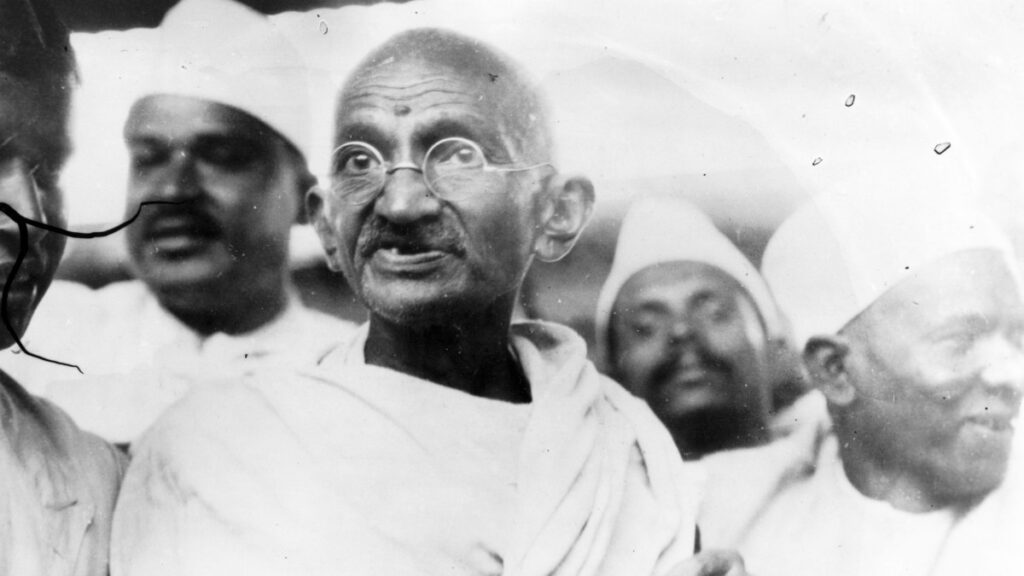Beretta, Gwalior Link & Gandhi’s Assassination
Oct 2, 2021 | Pratirodh Bureau
Kalicharan Maharaj also made several claims and allegations against Mahatma Gandhi and held him responsible for “encouraging the Nehru-Gandhi dynasty”
The conspiracy to kill Mahatma Gandhi was hatched as early as a week before Independence Day in 1947, claims a new book which brings out minute details of the assassination including how the Beretta gun with which Gandhi was shot was arranged by a well-known Ayurvedic doctor of Gwalior.
“The Murderer, the Monarch and the Fakir: A New Investigation of Mahatma Gandhi’s Assassination”, written by Appu Esthose Suresh and Priyanka Kotamraju, recreates the circumstances of Gandhi’s assassination, the events leading up to it and the investigation afterwards.
Based on previously unseen intelligence reports and police records, it also examines the potential role of princely states, hypermasculinity and a militant right-wing in the context of a nation that had just won her independence.
“… The conspiracy to murder Mahatma Gandhi was not the handiwork of a lone wolf or a few fanatic members of the Hindu Mahasabha. Most importantly, it was not conceived just a few weeks before 30 January 1948,” the authors say.
“The new evidence we have presented in this book traces the origins of the conspiracy to a time as early as a week before Independence Day in 1947. In our opinion, this discovery has enormous significance for the contemporary understanding of a defining moment in India’s history,” they write in the book, published by HarperCollins India.
On January 30, 1948, Nathuram Godse killed Mahatma Gandhi with the Italian-made automatic pistol No. 719791, Beretta CAL 9, manufactured in 1934. It was arranged by the Gwalior doctor Dattatreya Parchure, who is believed to have founded the Hindu Rashtra Sena (HRS).
There is a full chapter titled “The Beretta Gun that Killed Gandhi” in the book describing how the weapon was chosen.
After a failed assassination attempt on January 20, 1948, it was decided that Gandhi had to be killed before February 2 as he was going out of Delhi after that day.
Godse had a gun but it wasn’t good. He and Narayan Apte, who was in charge of the logistics, had come to Gwalior to seek Parchure’s help in getting a good revolver.
On January 28, the Beretta gun was bought in Gwalior from arms dealer Gangadhar Dandwate at Parchure’s house.
“… Godse and Apte took turns to check the pistol, take out its magazine and fill it with seven cartridges. Then they tried the safety catch. It was good to go. Apte paid Dandwate 300 rupees. He would send the balance (Rs 200) later, he said,”” the book says.
“Then Apte went out for dinner while Godse skipped the meal altogether. At 10.30 p.m., Godse and Apte packed their bedding and bag. Dandwate hailed a tonga passing by; Godse and Apte went off on their way. Two things were certain – there was a gun and a gunner to kill Mahatma Gandhi,” it says.
Dandwate got the pistol from Jagdish Prasad Goel, the principal officer of Parchure’s HRS. When Dandwate asked for it, Goel agreed on one condition – that either his pistol be replaced or he be given 500 rupees.
On 29 January, Godse and Apte arrived at the New Delhi Railway Station and tried to secure the retiring room.
“After some negotiation, Godse paid ten rupees – one half of it as room fare and the other half as a bribe – to the booking clerk, Sundar Lal. Apte was still looking for alternatives, but coming up short,” the book says.
The next day around 3 p.m., Godse and Apte parted ways.
“Godse took a tonga to the Birla Mandir and spent some time in front of the statues of Shivaji and Baji Rao Peshwa. Then he took another tonga, this time to Birla House. A fully loaded Beretta with seven bullets lay hidden in one of his trouser pockets. He went inside and took his place in the crowd that had lined up to greet Gandhi.
“At 5.17 p.m., the crowd spotted Mahatma Gandhi. As the fragile old fakir walked down the path towards him, Godse slipped his hand inside his pocket,” the book says.
An “erudite third-generation bureaucrat with a keen memory for details” had told Suresh that the gun that killed Gandhi came from the Alwar armoury and this anecdote rekindled the author’s interest in it.
On the princely states’ link, the book says, “If the Gandhi assassination probe team was looking for a motive, here it was: revenge for a fatal blow inflicted by Gandhi to a more-than-50-year-long grand project of assuming power when the British departure created a vacuum. By ending the legitimacy of princely states, Gandhi did something that even the British had been more considerate about.”
According to Suresh, the book tries to understand which Gandhi was assassinated – the anti-national or the apostle of non-violence or the one for whom God was love, not Rama, not Allah.
The authors say that Godse and those whom he represented killed a Gandhi they completely misunderstood.
“Or perhaps they never had the ethical sensibility and the spiritual imagination that are necessary to understand him in the first place,” they write. (PTI)
